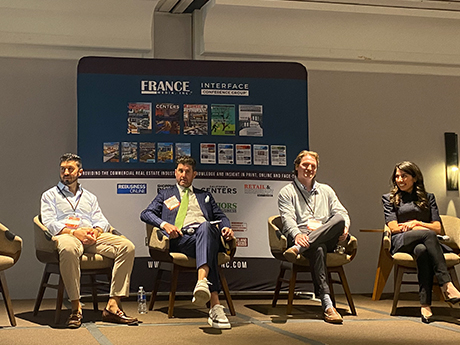By Taylor Williams
Although the Dallas-Fort Worth (DFW) industrial market is, objectively speaking, currently overbuilt, the recovery and return to healthy dynamics is already taking shape. As that unfolds, manufacturing facilities are having a moment.
According to CBRE’s third-quarter data, between 2021 and 2023 — the height of the post-COVID e-commerce craze that coincided with the last days of historically low interest rates — developers in DFW added nearly 130 million square feet of new industrial product. The supply boom mostly involved warehouse and distribution facilities, and absorption of new deliveries was coming along until this spring, when Liberation Day injected a staggering dose of economic uncertainty into the market.
In recent weeks, leasing activity has begun to pick back up. But investors looking to deploy capital into industrial assets see more upside on deals for manufacturing facilities at the moment, whether that means buying existing plants with heavy built-in power sources or targeting distribution buildings that can support manufacturing through light conversions.
Editor’s note: InterFace Conference Group, a division of France Media Inc., produces networking and educational conferences for commercial real estate executives. To sign up for email announcements about specific events, visit www.interfaceconferencegroup.com/subscribe.
At the annual DFW/North Central Industrial Texas conference that took place in September at the Renaissance Dallas Addison Hotel, a panel of leasing and investment sales professionals examined these trends on both individual and interconnected bases. Monte Walker, city administrator of the City of Howe, moderated this panel. About 250 people attended the event.
The panelists did not shy away from the fact that — especially in certain submarkets like South Dallas and DFW Airport — there is short-term pain from overbuilding. Yet there is little cause for long-term concern in the market due to its outstanding underlying growth drivers. It’s simply a different kind of market today, which should be expected in the aftermath of such massive supply growth. But a reversion to more traditional dynamics should arrive sooner than later.
Nathan Denton, principal at Lee & Associates, was the first panelist to touch on all these patterns in his opening remarks.
“Leasing velocity started off very fast in the first quarter, the slowed dramatically in the second and third quarters on the distribution side, predominantly due to tariffs,” Denton said. “But we have had 21 million square feet of positive absorption in the past 12 months, which is significant, considering how much talk there is about how slow the market is.”
“The market is not what it was two or three years ago,” Denton conceded. “It feels more like 2016-2017, which was still a good market. People just got spoiled by the amount of activity we had in 2021, 2022 and 2023. And manufacturing is really picking up, but for the most part, DFW is a distribution market. Manufacturing [activity] is climbing and should continue to do so, but distribution is such a hotbed for this market that manufacturing will never really be the dominant use.”
Sarah LanCarte, president of Fort Worth-based brokerage firm LanCarte Commercial, confirmed the trajectory of 2025 leasing activity as well as the elevated interest in manufacturing.
“January and February were OK [in terms of leasing], but after that, things definitely slowed, though momentum has picked up over the past couple months,” she said. “Manufacturing is where we as a company have been busiest this year, including with distribution buildings that we had out for lease and ended up selling to manufacturers. The uptick in manufacturing has been huge this year, and we expect it to continue into next year.”
James Ewing, vice president at Colliers, echoed the notion that despite some overbuilt pockets, the DFW industrial market as a whole was still healthy, even taking it a step further by describing the sector as “still on fire.” Ewing did qualify that statement by saying he’d only been in the business about six years and thus really only experienced exceptionally robust activity.
“From a tenant demand standpoint, we’ve had double the absorption of the next closest market, which is Phoenix,” Ewing said. “Third-party logistics companies are driving most of that activity, and in the past six weeks as we’ve had that uptick, we’ve started four or five new projects over 500,000 square feet. So the tenant demand is certainly still there, but we’ve gone from about 80 million square feet [of industrial product] under construction at one point to about 25 million square feet, which is a lot healthier.”
More specifically, Ewing said that logistics groups that service major data center operators had been contributing significantly to healthier demand of late.
He and Denton then touched on another potential source of growth: the growing presence of foreign manufacturers and distribution groups that have recently shown interest in establishing presences in DFW. Multiple panelists agreed that DFW’s centralized location between both U.S. coasts and Canada and Mexico, as well as the affordability and quality of life that exists in the metroplex, were major reasons that attracted foreign companies. According to Denton, however, the trend is “still in its infancy.”
Adam Abushagur, senior managing director, investments at Marcus & Millichap, was the final panelist to weigh in. Speaking from an investment sales perspective, Abushagur said that the narrative on distribution versus manufacturing deals had been somewhat reversed relative to a few years ago.
“Thinking back to one of the larger sale-leaseback transactions we advised on, which was [defense contractor] Elbit Systems in Fort Worth in 2020, a lot of the pushback we had on that deal involved the fact that it was manufacturing,” he said. “[Buyers would ask], ‘what am I going to do if this tenant leaves?’ Fast forward to today, and the entire macroeconomic and geopolitical sentiment we’re facing in 2025 has completely shifted. Investors want manufacturing because they’re sticky tenants. So there’s really been a shift in the lens of how investors are analyzing opportunities.”


